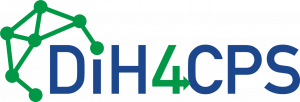Problem and Description
The Application Experiment will help homecare patients (i.e. sleeping apnea) to better monitor the evolution their treatments and maximise their acceptance. Monitoring services will be proposed for patient, Linde technicians and external prescribers.
Advances in several subfields of information and communication technology (ICT), including social computing, sensor networks, the Internet of Things, and intelligent information processing, have given rise to “a world of data” with fast and pervasive analytics at scale. In recent years, there has been a growing interest in collecting and analysing data about several aspects of our life, especially for home care. This emerging context has implications for how home health care may need to change to meet future needs.
In the context of home care, the adaptation of medical treatment to the Activities of Daily Living (ADL) remains a huge challenge when the knowledge about user lifecycle covers several dimensions: past activities, behaviour, beliefs, values, occupation, experiences, attitudes, etc. many health care data exist but that almost no information on home health care is available.
Approach
To improve our patient related data set and consolidate a consistent profile, we identified from the literature the following missing parameters:
- Humidity level of the room
- The sleeping position of the patient
- Record the different stages of sleep
- Type of sleep apnea
- Detect when the mask is put on or not
- Cleanliness of the tube between the PPC (medical equipment) and the mask
- Outside temperature
- Room temperature (to deduce cooling or heating level)
- Parameters of the PPC (defined by the prescriber)
- Location where the PPC is used (which room?)
- Geo-localization of the PPC,
- Weight of the patient
- Heartrate of the patient
- Blood pressure of the patient
Our problem consists on identifying the needed distribution of sensors and actuators (to change the PPC parameters) and propose non-intrusive network at each patient premises with a reasonable cost and a high level of reliability.
Implementation Plan
- Comprehensive requirements engineering to describe the interests of all stakeholders and to identify the most decisive process steps.
- Preparation of a business plan
- Development of a detailed project plan and distribution of tasks between the project partners.
- Construction of a prototype for the acquisition of image data
- Development of a prototype for the processing the recorded data
- Use of the information gained for the development of process control algorithms
- Combination and optimization of prototypes into one system
- Further development of the system for productive use (TRL 7)
Solutions to develop
With the support of ICT4Manuf DIH technologies, services and experimentations, Linde plan to develop the following business applications with the support of Lyon 2 partner:
- App1: Sensors network harvesting: generate a reliable and non-intrusive sensors’ network to collect the requested data for the missing parameters;
- App2: Real Time customer monitoring: mainly for Linde to detect and analyse interruptions in patient treatment
- App3: services for patients: to analyse the evolution of the treatment
- App4: services for prescribers: to validate the adequacy between patients’ profile evolution and the applied treatment.
Partner & Expertise:
| INDE | Data Analytics and patient monitoring |
| LYON2 | IoT and CPS integration in industry, service engineering and Big Data analytics |
For further information, please visit https://dih4cps.eu/experiment-02/

